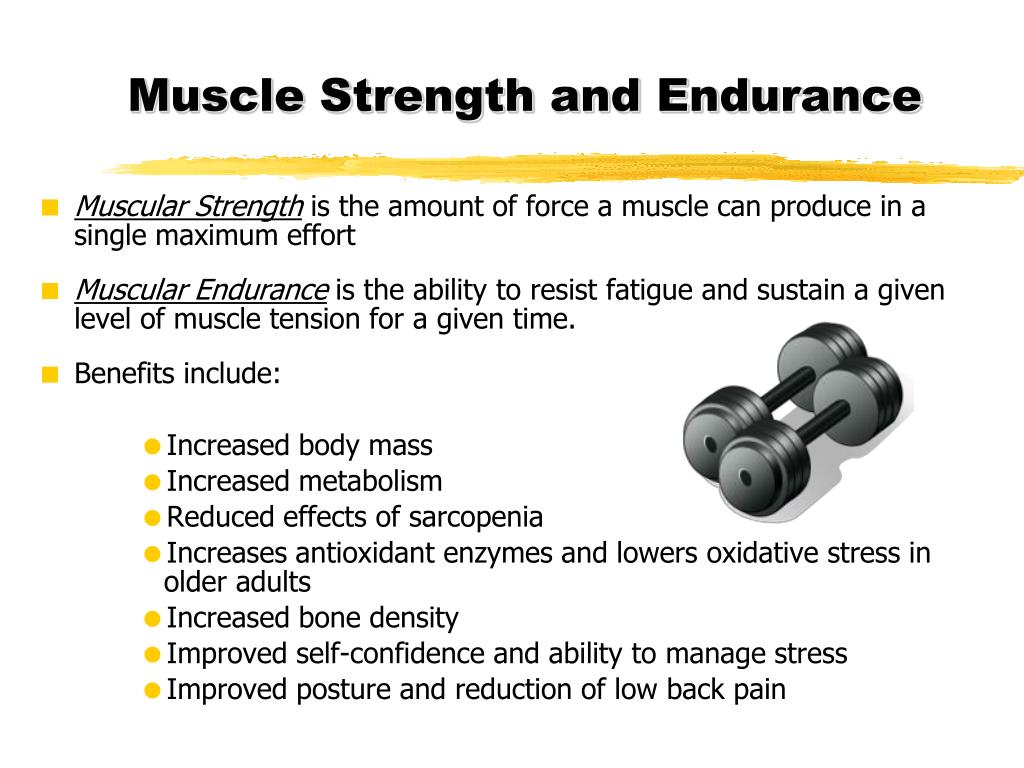


In technical terms, muscle strength describes the force generated when a muscle or group of muscles contracts. The effects of strength training include greater muscular strength, improved muscle tone and appearance, increased endurance, cardiovascular health, and. This may involve increasing the number of reps or increasing the amount of time a contraction is held. Every move you make requires muscle strength. Improving muscular endurance involves increasing the total time a muscle is contracted. The main goal, regardless of the method, is to constantly challenge your muscles as you progress - either by striving to perform more reps or to hold a position longer. In fact, a 2014 study found maximum improvements in ab endurance when performing the plank 5 or more times per week ( 6). Strength, Brooks explained, is 'your maximum ability to exert force.' Squatting 100 pounds one time, for example, requires strength. This will primarily work the abs and other core muscles. Muscular strength and endurance can have many benefits, such as reducing the risk of injury, helping you maintain a healthy body weight, leading to healthier. Muscular endurance isnt the same as muscular strength. Strength training also helps manage chronic conditions, such as back pain, balance issues, even heart disease and diabetes. Higher muscular endurance increases athletic performances in endurance based sports or aerobic activities.

Building endurance improves the aerobic capacity of muscles. The same idea can be performed with a plank, as described below. The benefits of muscle endurance exercises includes: Muscular endurance helps keep good postures and stability for extended periods of time. This works on the endurance of the hips and thighs. By nature, isometric contractions will train your muscles for endurance ( 6, 7).įor example, karate practitioners will squat in a horse stance (a squat position) for multiple minutes at a time. For example, if you use 155 pounds for 10 reps to failure, you might decrease to 110 pounds for a higher volume set.Īnother option is to increase the amount of time you hold a contraction. The caveat is that you will likely have to decrease the amount of weight you’re using. Just remember that you may need to adjust the load.įor example, if you normally bench press for 3 sets of 8–10 reps, then you may change to 2 sets of 25–30 reps. Similarly, when you try to improve your muscular endurance, completing high-volume sets may be an effective training strategy. This can involve increasing the number of reps you perform of a specific exercise or for a specific muscle group ( 4, 5).Ī study that aimed to test and improve the muscular endurance of cross-country skiers suggested that an effective muscular endurance training session would include more than 20 reps, but less than 100 ( 4). Improving muscular endurance involves increasing the total time a muscle is contracted during an exercise. Muscular strength is the ability of a muscle or muscle group to generate maximal force, whereas, muscular endurance describes the muscles ability to exert.


 0 kommentar(er)
0 kommentar(er)
